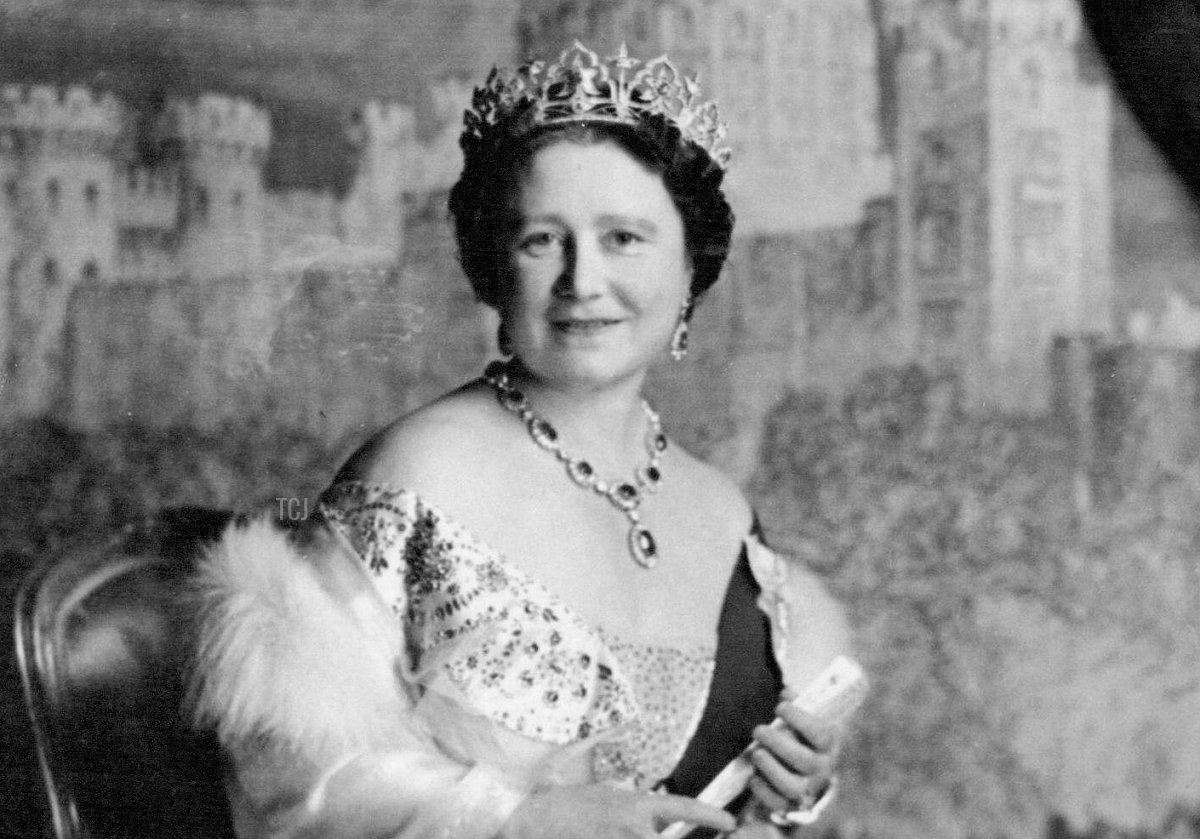
Our final Sparkling Spotlight post of the week focuses on an entirely new style of royal portraiture, featuring Cecil Beaton’s photographs of Queen Elizabeth the Queen Mother wearing Queen Victoria’s royal heirloom tiara and jewels.
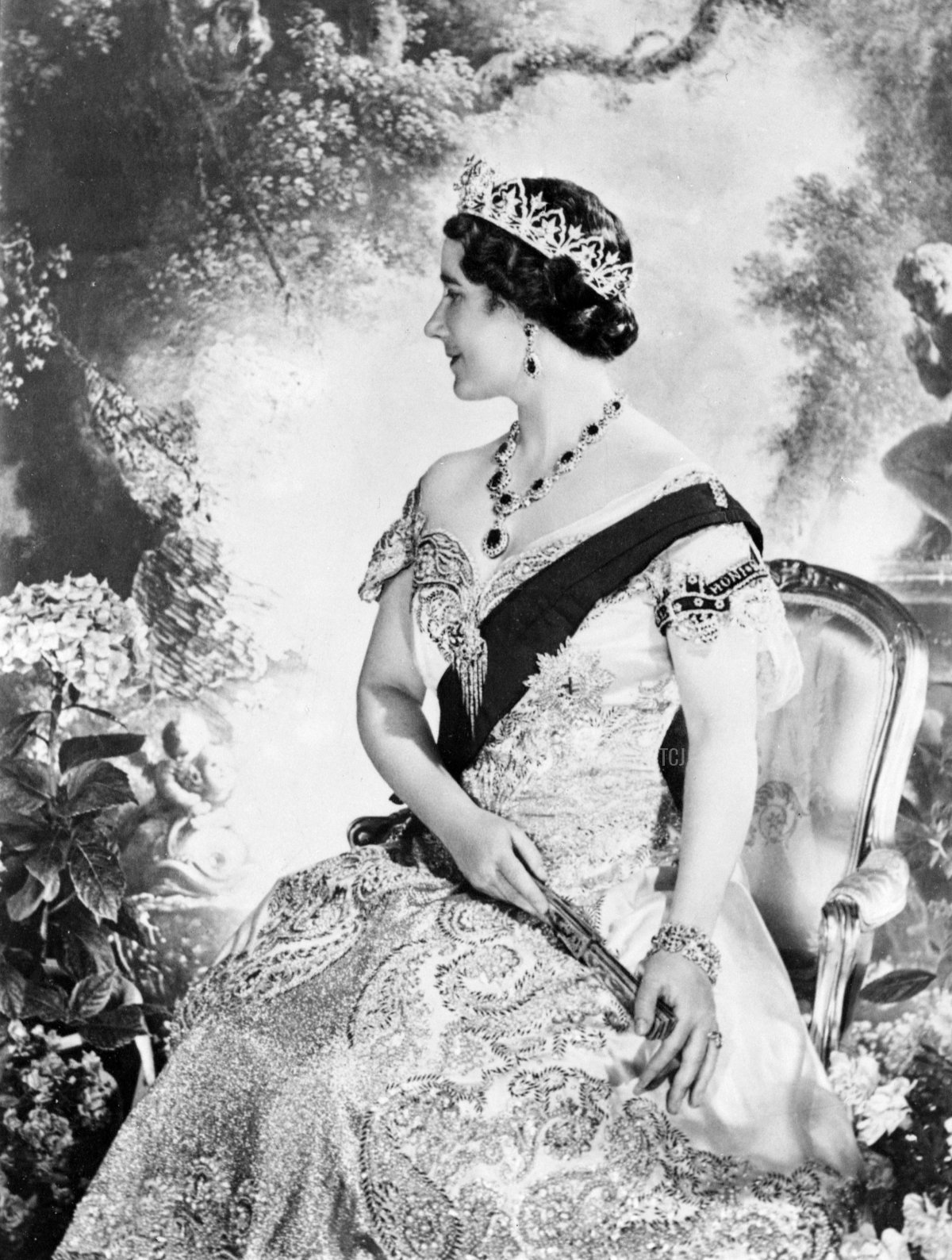
Cecil Beaton, the famed British photographer, artist, and diarist, had his first portrait sitting with Queen Elizabeth at Buckingham Palace in 1939. While previous photographic portraits of Elizabeth had been sleeker and simpler, Beaton’s photographs were part of a reimagining of her public image. Gone was the slim, elegant silhouette she favored in the 1920s and early 1930s as Duchess of York. In its place was an image of confectionary romance, part of her visual transformation for her new role as Queen Consort. This new image, significantly, was a clear counterpoint to the more severe style worn by Elizabeth’s new sister-in-law, the Duchess of Windsor, who represented abdication and change for many Brits. Elizabeth’s new look, by contrast, was all about continuity.
It began with the clothes and jewels. After King George VI’s accession in 1936, the new Queen’s favorite couturier, Norman Hartnell, had produced a range of evening gowns for her that echoed the Victorian world depicted by royal portrait artist Winterhalter. William Shawcross’s biography of Elizabeth notes that the King himself had suggested echoing the past when producing gowns for their 1938 state visit to France: “Hartnell recalled that the King showed him at Buckingham Palace portraits by Winterhalter of the Empresses Eugenie of France and Elisabeth of Austria, wearing crinolines.” Hartnell had subsequently made several colorful gowns in “this romantic, swaying style.” The rounded, exposed shoulders, the wide crinoline skirts, and even the evening fans all echoed the popular styles of the mid-Victorian era. As Queen Consort, Elizabeth now also had access to the Heirlooms of the Crown jewelry collection established by Queen Victoria, full of pieces that also dated to the same period.
Elizabeth’s Hartnell wardrobe was a triumph, and she largely adopted the style as her signature evening look throughout her husband’s reign. She wore similar fashions, also produced by Hartnell, during the 1939 royal tour of Canada. And she also chose Hartnell gowns for her 1939 portrait session with Beaton. Here, she poses in front of one of Beaton’s favorite painted backdrops, adding to the romantic and ethereal image created by the gown. Her jewels even echoed the majesty of the Victorian era, as all of the pieces she wears in this image come from Queen Victoria’s jewelry box.
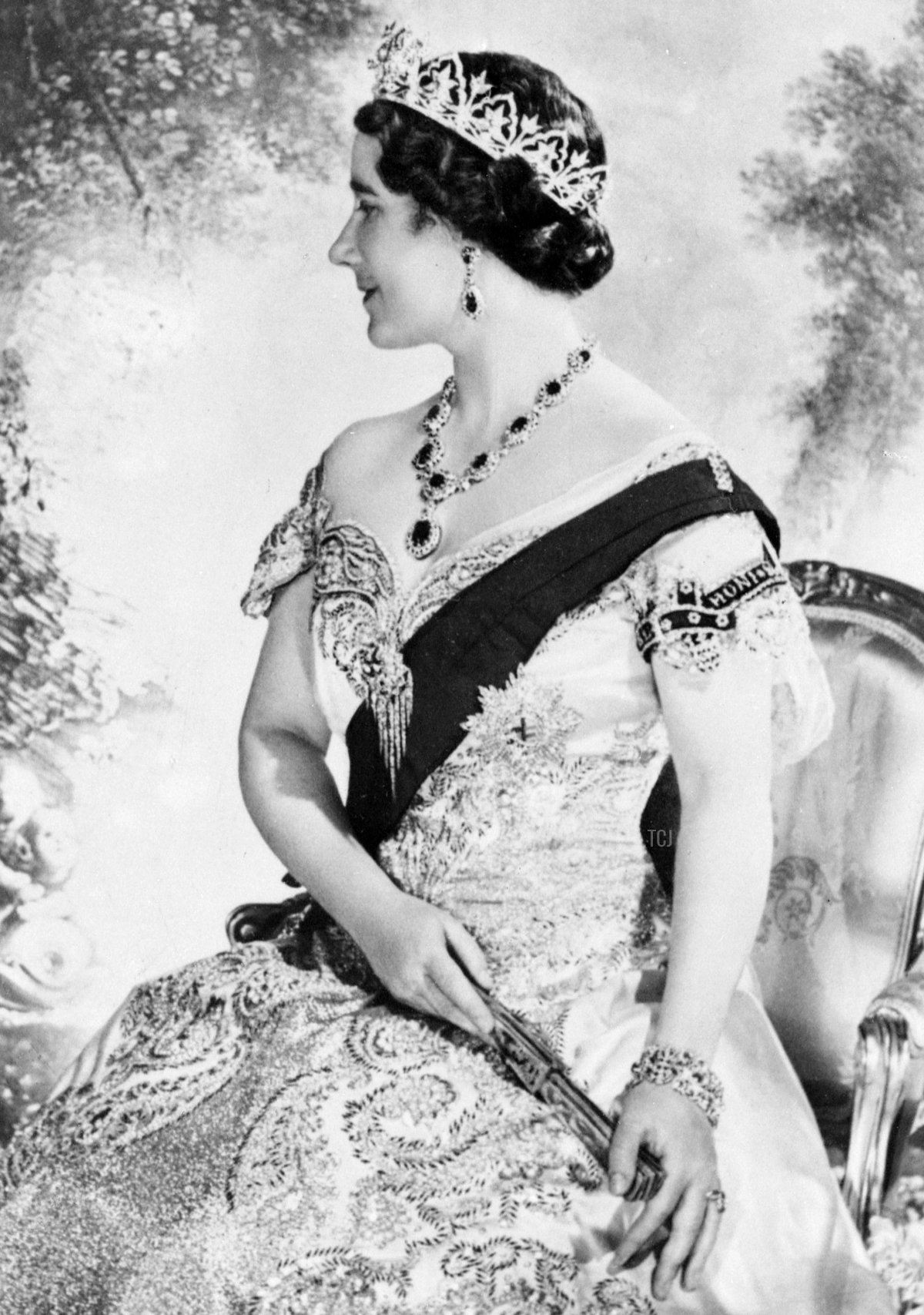
In these portraits, Beaton continues the thread, deliberately echoing the style of artists like Winterhalter and Gainsborough, and even borrowing photographic techniques from the Victorian era. In her book on Beaton’s royal portraits, Susanna Brown notes that Elizabeth often collaborated with Beaton on the portraits, helping to choose clothing and staging. Ultimately, this trio—Elizabeth, Hartnell, and Beaton—worked together to produce images that helped shape the public’s understanding of her persona. Brown writes, “In aligning his photographs with Winterhalter’s poetic and ravishing royal portraits, Beaton reinforced the stability and historical relevance of the British monarchy post-abdication, portraying Queen Elizabeth as the current heroine in a long succession of beautiful queens and princesses.” (It’s a photographic choice we’re still seeing used by members of the royal family today!)
This detail from one of the 1939 portraits shows the Queen wearing Queen Victoria’s Indian Circlet, which was designed by Prince Albert after he was inspired by displays of Indian design at the Great Exhibition. She pairs the tiara with more of Albert’s jewels: the Crown Ruby Necklace and Earrings. All of these pieces were originally set with opals, and the rubies were substituted later by Queen Alexandra. Elizabeth secures her Garter sash with two more of Victoria’s jewels: a diamond bar brooch at her shoulder, and the Diamond Fringe Brooch on her bodice. (Note that she’s even wearing the actual jeweled garter on her upper arm!) She finished off this jewelry look with Queen Victoria’s Diamond Bracelet.
This styled look, featuring an elaborate Hartnell gown with an asymmetrical neckline detail, was only one of the outfits worn by Elizabeth during the lengthy photo session. Notably, she also posed for Beaton during the same 1939 session wearing another Hartnell-designed evening ensemble, accessorized with Queen Mary’s Fringe Tiara (made using diamonds that originally came from a Victorian wedding gift) and the Coronation Diamonds.
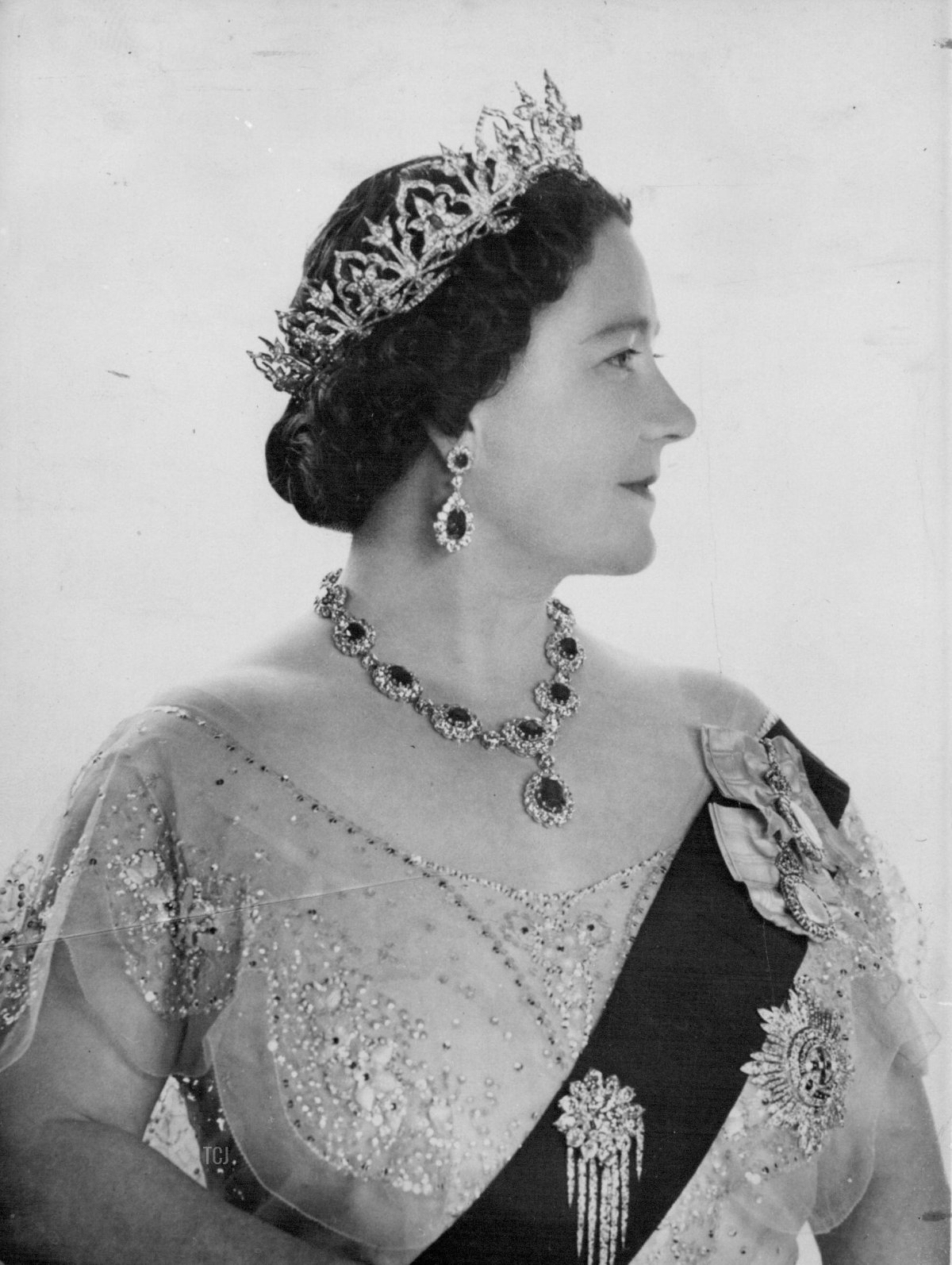
Elizabeth became one of Beaton’s favorite royal subjects, and he photographed her several more times over the years. This portrait, and the one below, were both taken in 1950 to mark her 50th birthday. Eleven years had elapsed since that first 1939 portrait session, but look how similar her entire look remains—she found a royal image that she liked, and she stuck with it. In these images, she again wears floaty, fairytale evening gowns embroidered with beads and sequins. And again, she wears Queen Victoria’s jewelry: the Indian Circlet, the Crown Rubies, and the Fringe Brooch. The war changed many things about both Britain and Elizabeth, but the stability and continuity of her royal image must have been a reassuring touchstone for many.
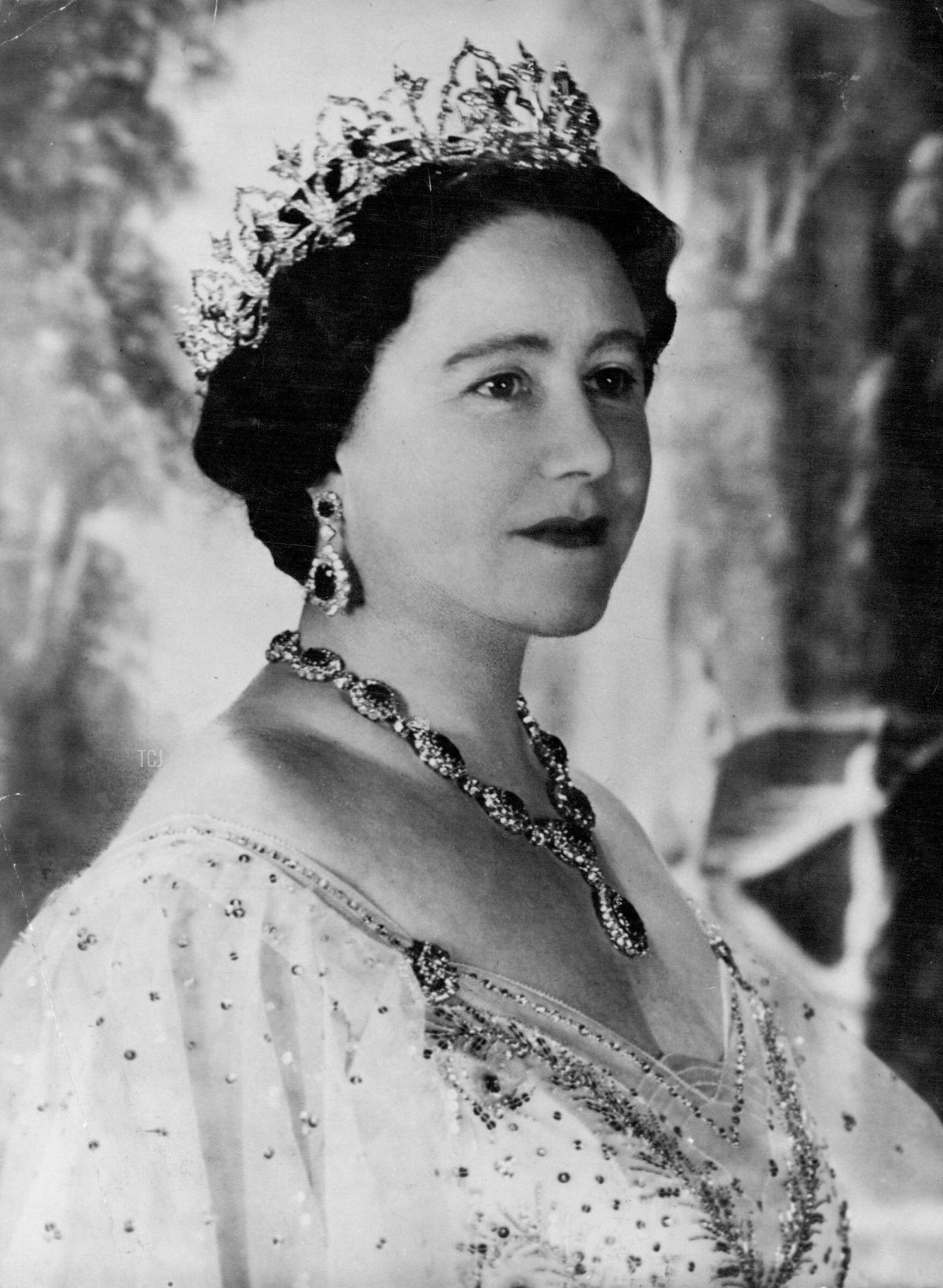
This image is said to be from the same 1950 portrait session. The tiara, earrings, and necklace remain the same—again, the Indian Circlet and the Crown Rubies—but the dress is a slightly different design. You’ll note that she’s left off her Garter insignia and Royal Family Orders here. She’s also added a pair of diamond dress clips to the neckline of her gown. The specific design details of the clips are a little difficult to see, but I believe these may be the diamond clips that she later gave to the Countess of Wessex.
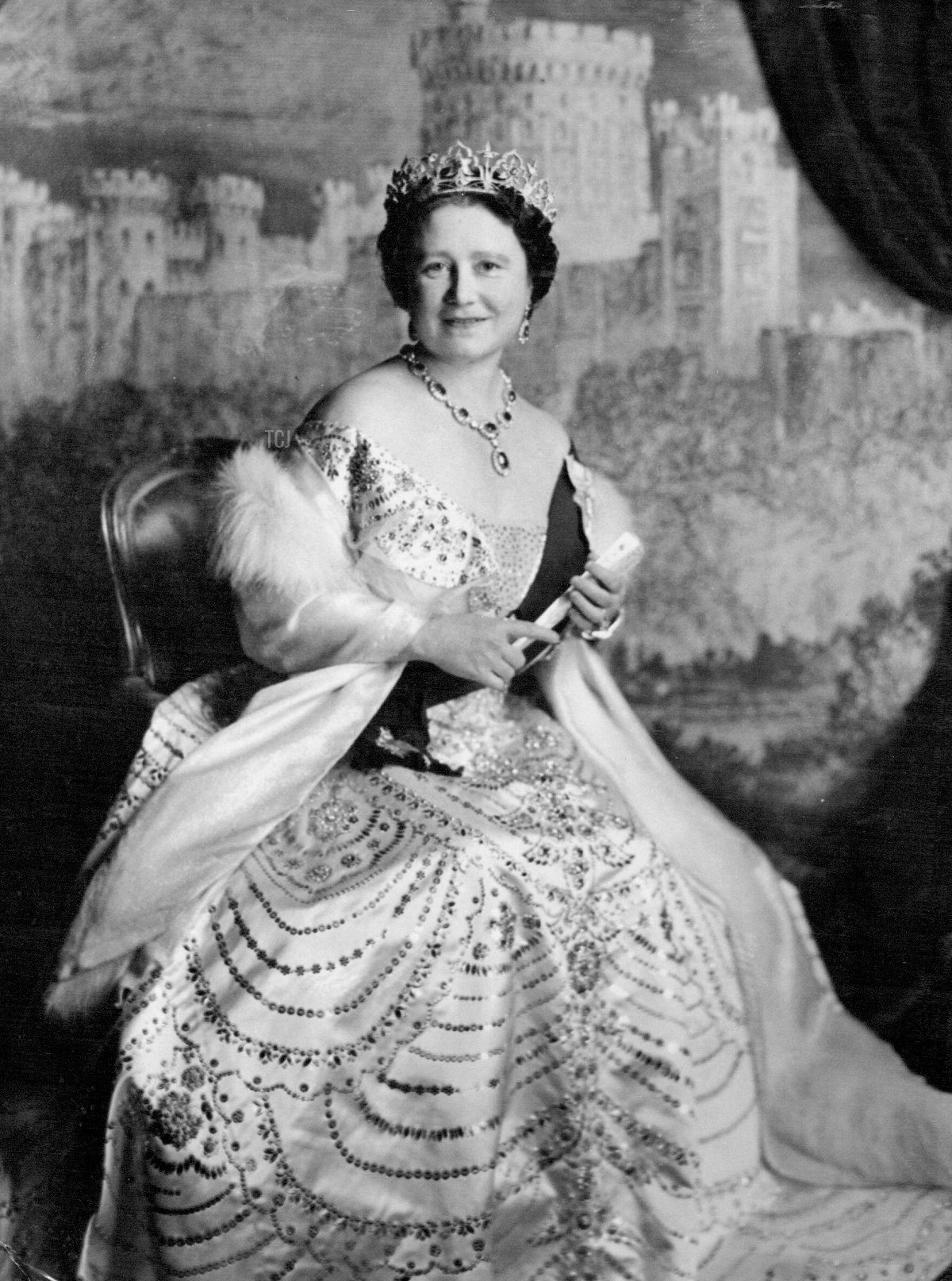
I’ve got one more Beaton/Circlet photographic portrait for us to enjoy today. This image was taken after the death of King George VI, when Queen Elizabeth was transforming into her new royal role as Queen Mother. Beaton took this portrait in May 1953, just a few weeks before the coronation of Elizabeth’s daughter, Queen Elizabeth II. The basic details remain the same here: the elaborate, Victorian-inspired evening gown, the tiara and jewels, even the fan clutched in her hands.
This time, though, Beaton has sourced a special new painted backdrop for the portrait. Brown notes that Beaton “commissioned a painted backdrop from Martin Battersby in order to create his own version of Winterhalter’s portrait of Empress Eugénie.” That portrait, which you can see here, shows Eugénie standing before a curtained view of the gardens of the Palais des Tuileries. Beaton’s version replaces that palace with Windsor Castle in his version. Like Eugénie, Elizabeth was a royal woman who would live out a long widowhood, but in Beaton’s portrait, Elizabeth remains a steadfast and regal figure who clearly continues to have a clear sense of her role within the monarchy.
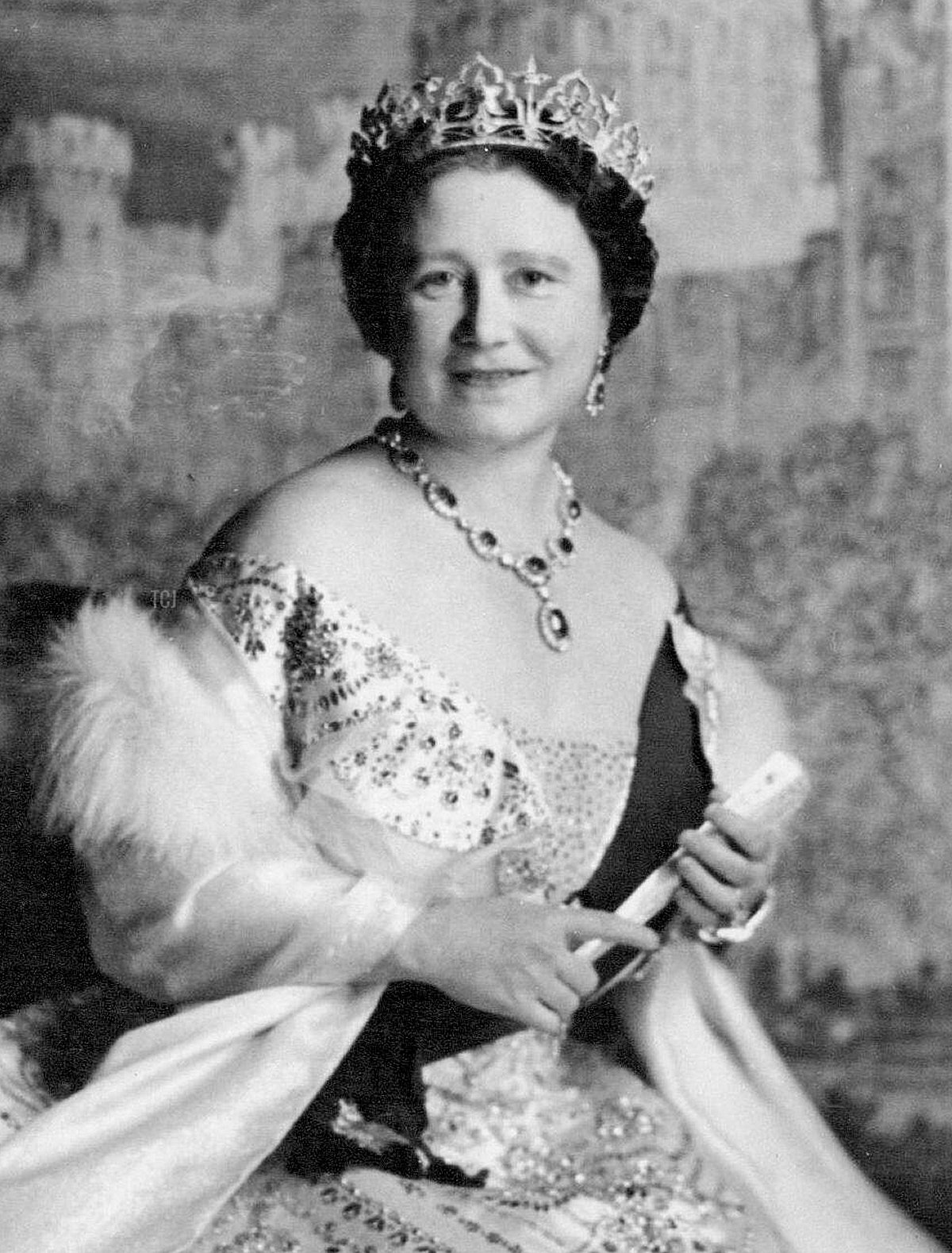
Here’s a closer look at the jewelry worn for that 1953 portrait. Again, Elizabeth wears the Indian Circlet and the Crown Rubies. Another image from the same session reveals that Queen Victoria’s Fringe Brooch is again pinned to her bodice. She’s also wearing an interesting bracelet that appears to be set with diamonds and darker stones—rubies, naturally, would be my guess. In their notes on the photograph, the Royal Collection simply references the jewel as “Queen Victoria’s bracelet.”
Leave a Reply
You must be logged in to post a comment.